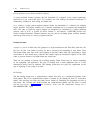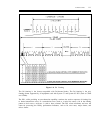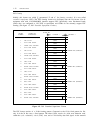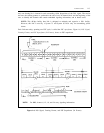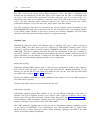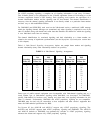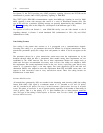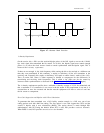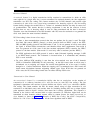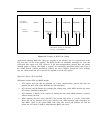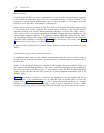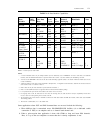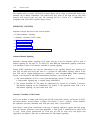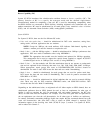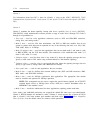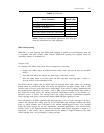
1-18
INTRODUCTION
Restricted Channel
A restricted channel is a digital transmission facility restricted to transmissions in which an all-0s
octet (eight 0s in a single time slot) is never transmitted. In restricted channels, the line equipment’s
transmitters use ZCS line coding. This format monitors the 24 DS0 channels and prevents eight
consecutive 0s (the all-0s octet) from being transmitted. On detecting eight 0s, the line-coding
format forcibly changes the second LSB to a 1 when it is transmitted because too many 0s causes loss
of synchronization. This ensures that the 1s-density requirement is met but the receivers in these
facilities have no way of knowing which 1s were 0s when transmitted and the data is destroyed.
Therefore, user data transmitted in the DS0 channels with ZCS must be restricted to not generate the
all-0s octet (hence the name restricted channels).
ZCS line coding is done in one of two ways:
●
For data, a data communications protocol that does not produce the 0s octet is used. The high-
level data link control (HDLC) protocol, or those protocols built on HDLC (such as the DCP,
PRI, and BRI signaling protocols and DMI modes 2 and 3), do not generate an all-0s octet (when
the signal is inverted before transmission) and therefore meets these requirements. Data mode 0
does not generate an all-0s octet if the data terminal equipment (DTE) transmits the HDLC
protocol to the data module. (Data mode 0 is used only when a customer provides HDLC.)
For ISDN applications the LAPD protocol is used to make D-channel signaling messages. LAPD
is an HDLC-based protocol. The D-channel is inverted before it is transmitted and, therefore,
ZCS is never activated.
●
For voice, 64K-bps PCM encoding is sent from the voice terminal over one of the I channels
(DCP) or B-channels (ISDN-BRI) for call processing. At the DS1 board, when an all-0s octet is
encountered on an outgoing call stream, the second least-significant bit of the octet is forcibly
changed to a 1 before transmission. When the outgoing call is transmitted from a DS1 board, the
board cannot discriminate between originating channel types. Since PCM does not generate an
all-0s octet, the ZCS line-coding format does not affect 64K-bps PCM voice.
Unrestricted or Clear Channel
An unrestricted channel is a transmission facility that has no restrictions on the number of
consecutive 0s so arbitrary insertions of 1s will not occur (as with ZCS line coding). The line
equipment’s transmitters and receivers in these facilities use bipolar with 8 zero substitution (B8ZS)
line coding. This format monitors the DS1 bit stream, detects strings of eight consecutive 0s (not
restricted to an individual octet), and encodes these 0s (including framing bits) into a unique bipolar
pulse sequence (called a bipolar violation) that meets the 1s-density requirement. This sequence is
detected at the receiver and converted back to eight consecutive 0s. Therefore, digital data can be
transmitted on these channels without concern about its content (hence, the name unrestricted or
clear channel) as shown in figure 1-8, Example of B8ZS Line Coding. See AT&T Compatibility
Bulletin No. 144: Clear Channel Capability for the exact algorithms used in B8ZS.



